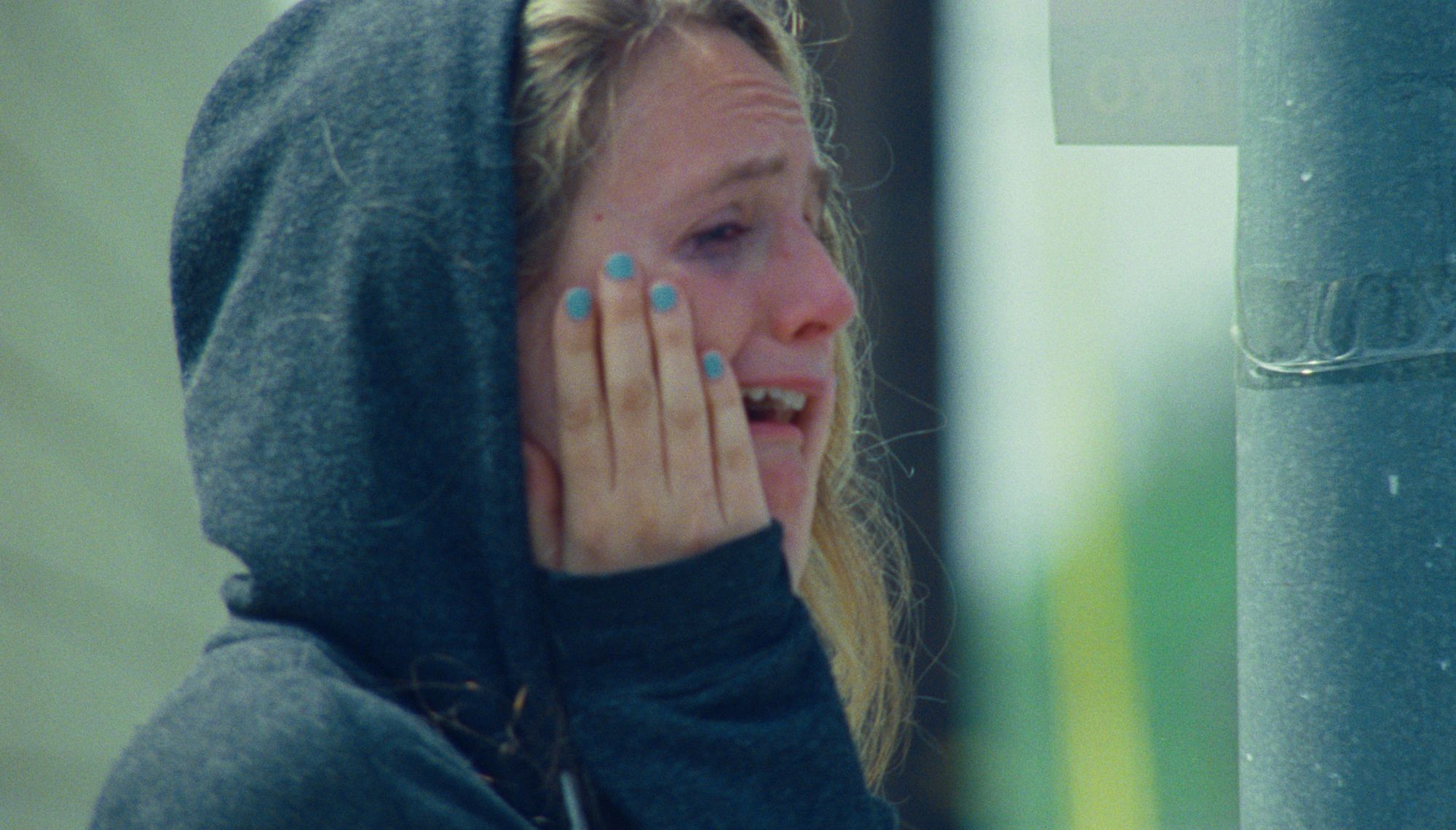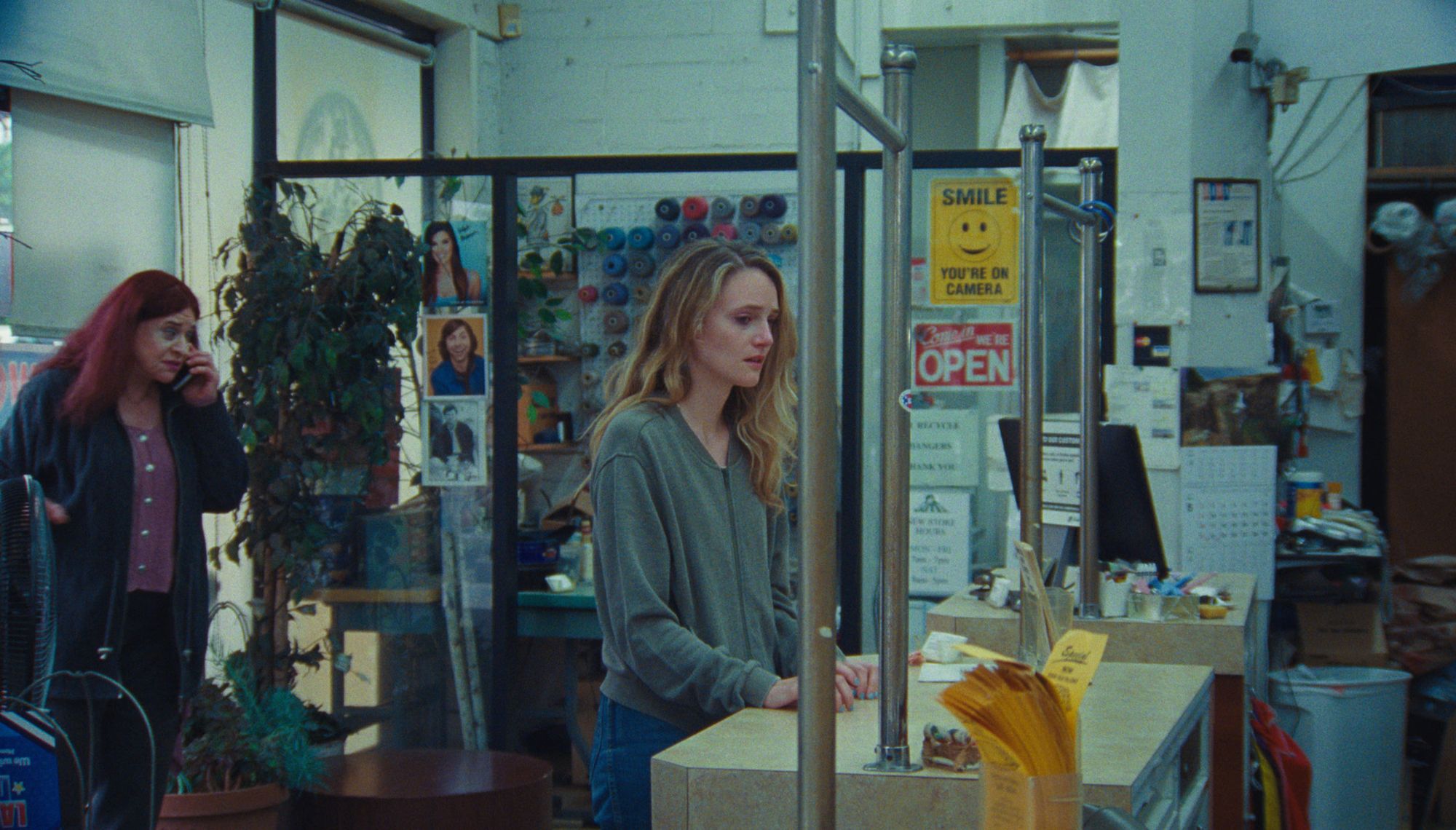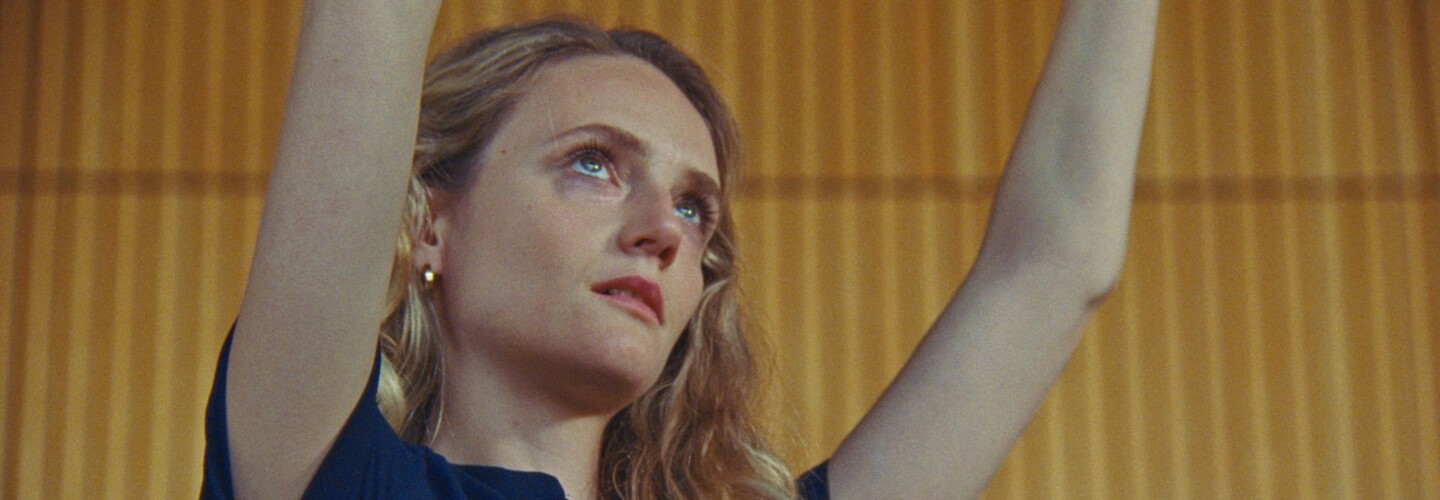
It’s widely accepted that if you don’t automatically yawn when you see someone else doing so you are a psychopath. Whether that’s a valid test or not, the subject of emotional contagion is a topic which Director Alec Moeller felt compelled to explore in the writing of his dark comedic short Empath. Even before the wave of global lockdowns hit and we all became hives of contemplation, Moeller had begun asking himself about the nature of empathy and its role within society. That curiosity naturally led him to create a protagonist afflicted with the mysterious syndrome of hyper-empathy, magnificently played by Betsey Brown, whose life as an emotional sponge prompts her to seek help with a group that claims to treat the disorder. The LA-based Moeller takes his audience through her journey with a series of awkward encounters and situations, leading to a brilliantly absorbing watch. We had the pleasure of sitting down with Moeller for a chat in where we delve into the progression of his script through three distinct stages, paying homage to Todd Hayne’s environmental illness feature and how he shaped the film to make the most of the physicality of Betsey Brown’s sharp and astute performance.
What made you want to explore this unusual disorder?
I developed the concept sometime in early 2020 right before we went into lockdown. I was attempting to diagnose a lot of behavior I was witnessing in the culture at the time. I began asking myself questions about the nature of empathy; particularly whether it is a tribal tool that functions to strengthen group cohesion. Though it’s a cynical question, it was a line of thought that I could not shake. I struggled with the script over the course of a year, and in that year it evolved through several iterations. In my experience there have always been about three main drafts: the initial creative explosion which doesn’t quite work, the molding of the story structure and finally, the paired down and garnished final draft.
Were there any significant shifts in the story as you moved to the second and third drafts over the year you were working on it?
Over the course of that year’s writing, I viewed Todd Haynes’ 1995 masterpiece Safe for the first time and it blew me away. I immediately realized that Empath kind of needed to be a love letter and homage to Safe, considering that they both seemed to be about the intersections of illness, identity, and community. There was no way around it, and I had to pay respect to that film, which was just so ahead of its time. So that viewing had a dramatic impact on the second and third drafts, specifically the support group element. There was a little bit of support group stuff in the first draft, but it really clicked after finding Safe.

Were you worried about writing the film as a dark comedy given that it is dealing with a known disorder?
I wasn’t worried about pushback over the subject matter because I knew that my intentions were good and that they would shine through the work. It was not my intention to mock or deride anyone who might actually identify with this disorder or even the characters in the film for that matter. In fact, several cast members, including Betsey, expressed to me that they heavily identified with the character and her condition.
The film ended up coming out as a dark comedy because I am naturally drawn to films with dynamic tones.
Google searches really don’t yield a lot of promising results as to whether or not this is a recognized medical condition. But just because it isn’t yet recognized by the system doesn’t mean that it isn’t real. The accounts I read from self-diagnosed empaths usually included a narrative of misdiagnosis by healthcare professionals. So I thought it was really important to tackle that in an early scene and place the audience in a position where they can rally behind Kate feeling as if she’s being snubbed and gaslighted by people who don’t actually understand what she’s going through.
The film ended up coming out as a dark comedy because I am naturally drawn to films with dynamic tones. It’s also just a product of my own sensibility and personal perspective as a writer and director. Plus, I’m not sure anyone wants to see an empath movie that takes itself completely seriously. I haven’t received any pushback, mostly love from the community of filmmakers I’ve found myself a part of, as well as random viewers who understood the tone of the material and enjoyed it enough to reach out.

With the script locked down how did you go about finding the film’s locations and cast?
Pre-production was the most difficult part of the process, and undoubtedly the hardest I’ve ever worked on anything in my life. The biggest hurdle was finding our main location, which was written in as a recreation center. The idea was that it was meant to feel like a rented space for the Adler character’s program. It doesn’t sound too difficult a task to find a recreation center, but it was incredibly difficult to not only find the right rec center, but to ultimately gain access to the space. I met with LA Film’s location manager dozens of times before we finally found the perfect rec center, only to learn a week out from our shoot date that all of LA City’s interiors were not accepting any location shoots at the time and we were actually not even supposed to have been allowed into these locations during the lockdown.
It was extremely high pressure as we had holds on an incredible team that we couldn’t afford to lose by pushing our shoot date. Luckily serendipity struck as my Producer Andy Ruse and I racked our brains. His girlfriend suggested her childhood church which she still had connections with. In my experience making films, this kind of serendipity always proves to give you something much greater than you could have ever wanted or planned for. We were able to shoot 95% of our two and a half day schedule at this one location.
The casting process was also quite rigorous. Fortunately, the incredibly talented Betsey Brown loved the script and attached herself early on before I even had my producers attached, so she really anchored me in pre-production. Building the cast out beyond her was comprised of hours of scrolling through backstage and Instagram, as well as recommendations from friends and watching as many staff picks as I could to find talent. The Adler character was the hardest to cast and again we were very lucky to find Michele Simms who blew us all away with her first line read. It was a moment when my producer and I looked at each other and confirmed that she was absolutely our best choice for that part.

How did you get the script in front of the amazing Betsey Brown and what was it that she brought to the role which impressed you so much?
I contacted Betsey over Instagram and hit her with the quick pitch. She was very kind and allowed me to send her the script. What she brought to that role was this contradiction of a very subtle, yet very big and physical performance. The character is meek and lacks both agency and community, but later in the film finds both of those things through her illness, which she then later values not as an illness, but as a social asset within this newfound community. Betsey has a really special gift (or maybe it’s just the result of hard work honing her craft) of physicality in her work. I think it’s really apparent to anyone who has ever watched her perform that it’s one of her greatest strengths. I really made sure to honor that physicality and let her creative choices breathe as much as possible in the edit.
There are a lot of characters and plot involved in this short, but really the most exciting stuff to me is how we derive meaning from the story directly through Betsey’s performance as a medium channelling it. Working with her was super rewarding. Early in pre-production, I asked her if there were a certain amount of takes she liked to work into or what her preference was. She replied to me that she would give me her best take every take, and she did. Working with her was really just a matter of being a good audience member and giving her really basic notes for the sake of the edit.
Betsey has a really special gift (or maybe it’s just the result of hard work honing her craft) of physicality in her work.
Could you walk us through the technicalities of the shoot? How smooth sailing was that and what was your set up?
The shoot was an absolute dream, and the shoot itself is always the height of the process in general for me. I owe so much to my two producers Andy Ruse and Jesy Odio who got us there and kept me insulated from the politics and outside pressures that can corrupt your enjoyment of the process on set. We were all enamored by Ally Davis’ Lynchian presence, as well as Ben Hoffman’s comedic timing. It was very special to work with newcomer Leanne Tarrab who plays Jani and did a great job for one of her first roles in a project of this size.
The film was shot by my wonderful DP Ben Mullen on 3 perf 35mm with an Arricam LT, Zeiss standard speeds, and a Cooke 25-250mm. The zoom was integral to the visual language I had developed in the script and luckily it’s one of Ben Mullen’s favorite tools, so it was a given we would have one in our package provided by Keslow. Ben and I shotlisted the entire script and mapped out the angles of each location with a whiteboard over zoom calls. We knew that we didn’t have a lot of time, but I definitely wanted at least 30 setups a day. The zoom lens came in handy in this regard as it gave us the flexibility to grab quick inserts without needing an additional setup.
We spoke at length about a naturalistic look and I made it very clear to him that I didn’t want the film to have any sense of artifice. I pressed for this sense of naturalism to juxtapose the more surreal elements of the story in the hopes of seducing the audience into believing that this story wasn’t too far outside of the realm of possibility.
Ben and I both share a love for the works of Gordon Willis, Harris Savides, and Sayombhu Mukdeeprom, all of whom prefer to light spaces rather than the actors themselves, which I believe has a huge psychological or subconscious impact on the viewer. Ben did an incredible job and I am so proud of his work on this film.

Is the angle mapping process a typical part of your process? How do you think it impacted the actual shoot?
The mapping out of our shots within the locations was a really intuitive idea we came up with on a call. Ben had a whiteboard and drew up a support group circle. We then used arrows to figure out the sight lines. I have never done this previously, but I’m very glad we did because it probably saved us some precious time. It definitely helped having a visualized plan, especially going into that first support group scene where there are about ten plus actors sitting in a circle and you need to be agile but exacting with your setups.
And was post as pleasant an experience as the shoot?
Post was also relatively smooth. My producer Andy Ruse edited the film pretty quickly and I was very happy with his first pass. We were able to make my edits over the course of several sessions. The score by Jack Sobo and Jon Sevitz was one of the most rewarding steps of the overall process. They were incredibly open to collaboration and allowed me I’m assuming unlimited passes at each cue, although I didn’t need more than three or four. They did nail the melody of each cue right off that bat; we did not alter the core melodies for any of the tracks, they were the first try and I was totally intoxicated by their simplicity and their earworm quality. I would find myself whistling those melodies all day, and occasionally during editing I would catch others also whistling.
Our grade was done by Colorist Andrew Francis, who is very supportive of young independent filmmakers. During the grade we found ourselves leaning into a more photochemical look with Andrew’s enthusiasm, as he has extensive experience working with release prints for Technicolor in the past. Finally, Ben and I were invited to strike a 35mm print and exhibit it at the Lumiere theater as a part of a 35mm shorts night. I am so happy with our end result which is a lush and vibrant look that subverts the subject matter in a way that forces you to engage with the material in a way that I find very satisfying.

The process of grading the film was really about subverting the tone of the material. I can’t think of anything cornier than grading your film with super cool blues to suggest a dramatic mood. That style of look has become so common these days thanks to the reliance on and convenience of LUTs, and it’s just not how I experience the world. I wanted the grade to have an eclectic pallet and a naturalism that would allow these characters to inhabit a real world as opposed to an overtly-designed dystopian one. Our Andrew was really enthusiastic about us leaning into a photochemically-finished look, which I really love and miss from films these days.
I wanted the grade to have an eclectic pallet and a naturalism that would allow these characters to inhabit a real world as opposed to an overtly-designed dystopian one.
As you mentioned the score definitely has an earworm element to it. What guides or ideas did you seed Jack and Jon with for the music?
I should mention that Jack and Jon go by DUMMY MUSIC. I provided them with maybe three or four references. I’m obsessed with Gerald Busby’s score for Robert Altman’s 3 Women. It’s so eery and over the top in a fun and beautiful way. I particularly love the combination of instruments used in that score. The use of clarinet was something that I had on my mind as early as the writing process. Jack integrated some flute and synth on his own, which I really ended up loving. Jack is also from Encino and I couldn’t help but think that some of that synth felt a little inspired by the opening of Safe as Julianne Moore drives up through the hills of that neighborhood. The majority of the instrumentation was recorded live and that really does make such a huge difference. The strings give me goosebumps every time. I am really proud of their work on this.
I could definitely see the world of Empath opened up to feature length, is that on the cards? What are you working on next?
There is a really wild feature length script that I’m very excited about. I would love to continue forward with this character and share her arc an hour-plus from where the short leaves off. I would also love another crack at refining the tone in general. It would not cost too much to make, considering that it’s all performance driven, but I also don’t want to attempt it unless I have the appropriate resources. It’s just a matter of finding someone to cut a check. Someone please put me in a room with A24. In the meantime, I’m working on another short to shoot this year and developing another feature script.


